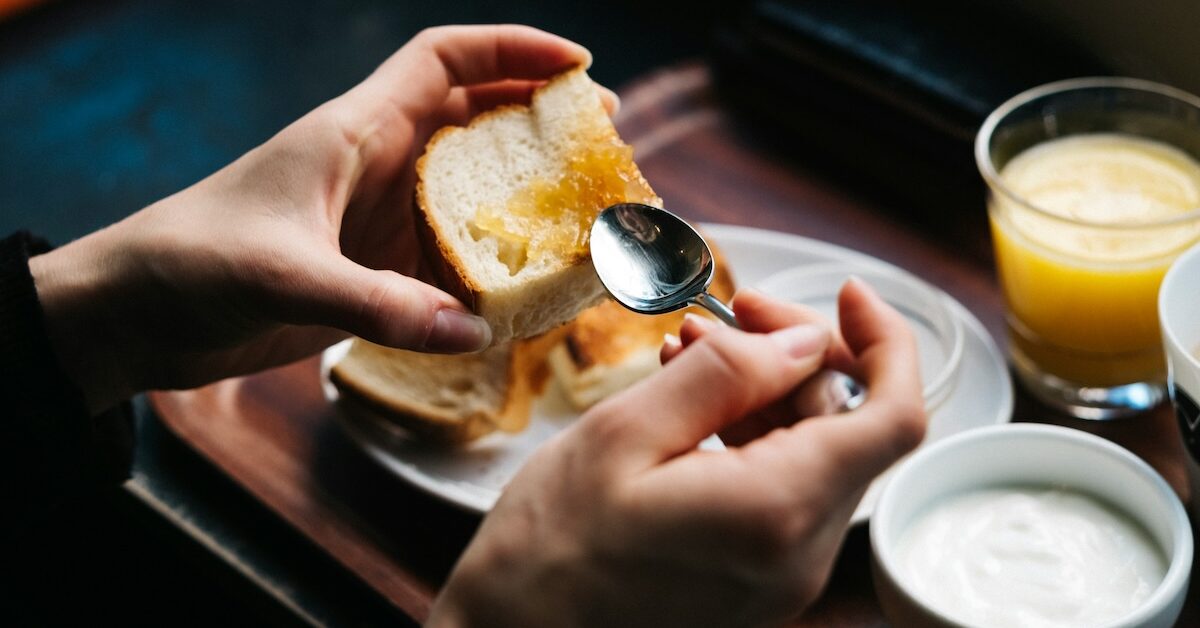Although the French excel in cuisine overall, including breakfast pastries, their morning meal is rather simple. The term for breakfast in France, le petit déjeuner, literally translates to “little lunch,” the first indication that breakfast in France is often considered the least significant meal of the day. A typical French breakfast often consists of nothing more than an espresso accompanied by light breakfast foods like a croissant or tartine—no eggs in sight.
In contrast to many countries where breakfast often features savory elements like cheese, cold meats, eggs, or bacon, typical French breakfast food leans towards sweetness and a heavy emphasis on carbohydrates. Heavier, more savory dishes like quiches, omelets, and sandwiches, are generally reserved for lunchtime.
While lunch and dinner in France can be long, drawn-out affairs consisting of several courses, a typical French breakfast acts as a gentle prelude to more fortifying meals throughout the day. Here are some of the French breakfast foods you’re most likely to come into contact with at your next “petit déj.”
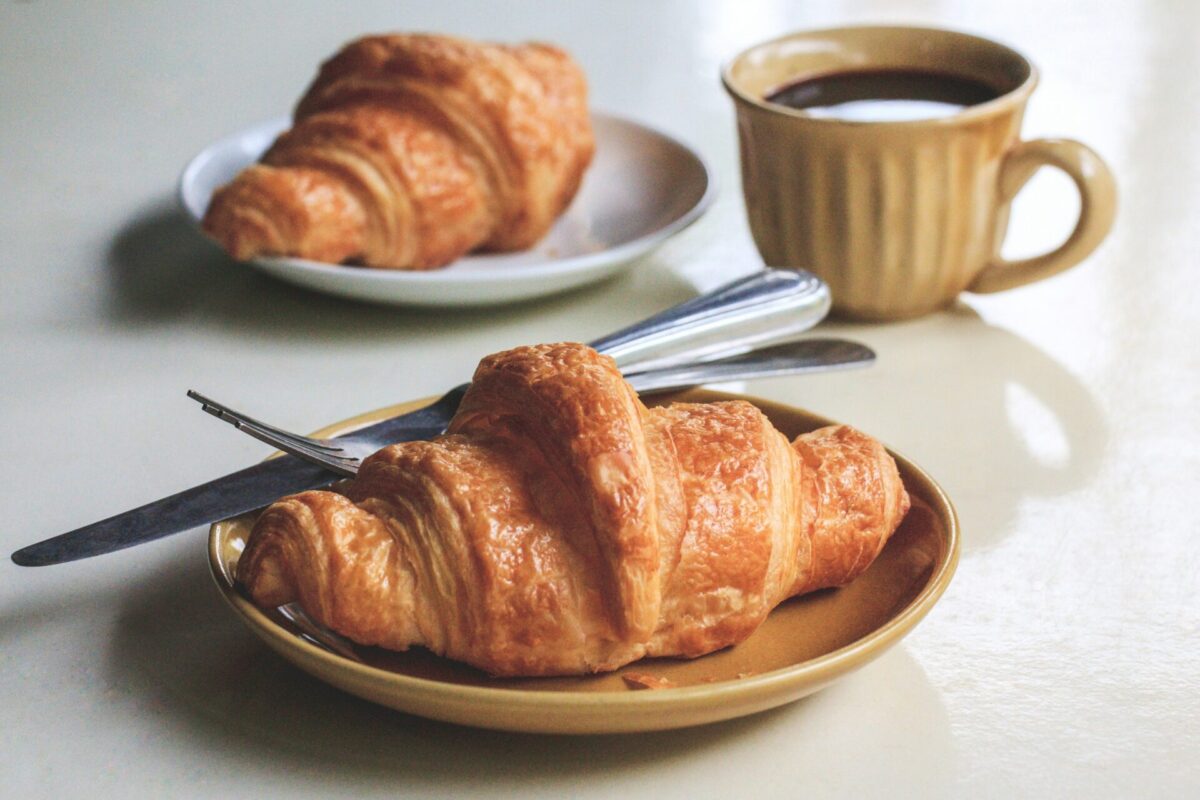
Traditional French Breakfast Foods
Although not all French people eat identical morning meals, they generally adhere to a standard menu. And no, they don’t eat croissants every day; they are more likely to enjoy one as a weekend treat, or save their pains au chocolat (chocolate croissants) for the afternoon goûter (snack). A classic croissant ordinaire or croissant beurre are common, but the French typically don’t fill their croissants or put anything on top of them. (With a few exceptions, like the pain au chocolat, croissant aux amandes, or croissant jambon fromage.) While external influences from other cultures and habits (like cereal) are starting to make an impact, the traditional French breakfast typically comprises:
- Hot Drink — Despite not boasting the finest coffee in the world, the French still relish a café (espresso) or café au lait (coffee with steamed milk, similar to a cappuccino) in the morning. Some may even prepare a French press brew, or snag an instant coffee from an office/university machine, but getting coffee to go is extremely rare, and it is generally accepted that you will take your café au lait sitting down at home or in a cafe. For those who prefer to steer caffeine-free, options like hot chocolate or herbal tea (tisane) are available. While some are now embracing matcha and chai, these beverages haven’t traditionally been the norm. But as many cities in France now boast craft coffee shops, beverage availability is constantly evolving and adapting to modern tastes.
- Fresh fruit or juice — The French love a glass of freshly squeezed orange juice, so jus d’orange is a pretty common part of a typical French breakfast. It’s sometimes replaced with a seasonal fruit, or popular breakfast drinks like grapefruit juice or apple juice.

- La tartine (baguette toast) — Although there’s no direct translation for “tartine,” it essentially refers to a slice of bread or baguette. It could be small or an entire piece of baguette, fresh or toasted, and topped with virtually anything. Many French enjoy marmalade or butter on their tartine, while children often opt for Nutella (of which France is the largest consumer).
- Les Viennoiseries — Viennoiseries, while not technically pastries, fall into the category of breakfast foods you’re likely to pick up at the local bakery in France. These include croissants, pain au chocolat, pain au raisin, palmier, chouquettes, and others. They are often bought in a boulangerie and sometimes grabbed on the go, though you’re more likely to see someone sit down with their to-go bag than munch on their food while walking.
- Yogurt — A French breakfast would not be complete without a side of yogurt. The French love yogurt, and if you go to a grocery store in France you’re likely to find an entire section devoted exclusively to yogurt. As part of a French breakfast, yogurt can be topped with anything from fresh fruit to a sweet chestnut spread. It can be enjoyed alone or as part of a larger meal.
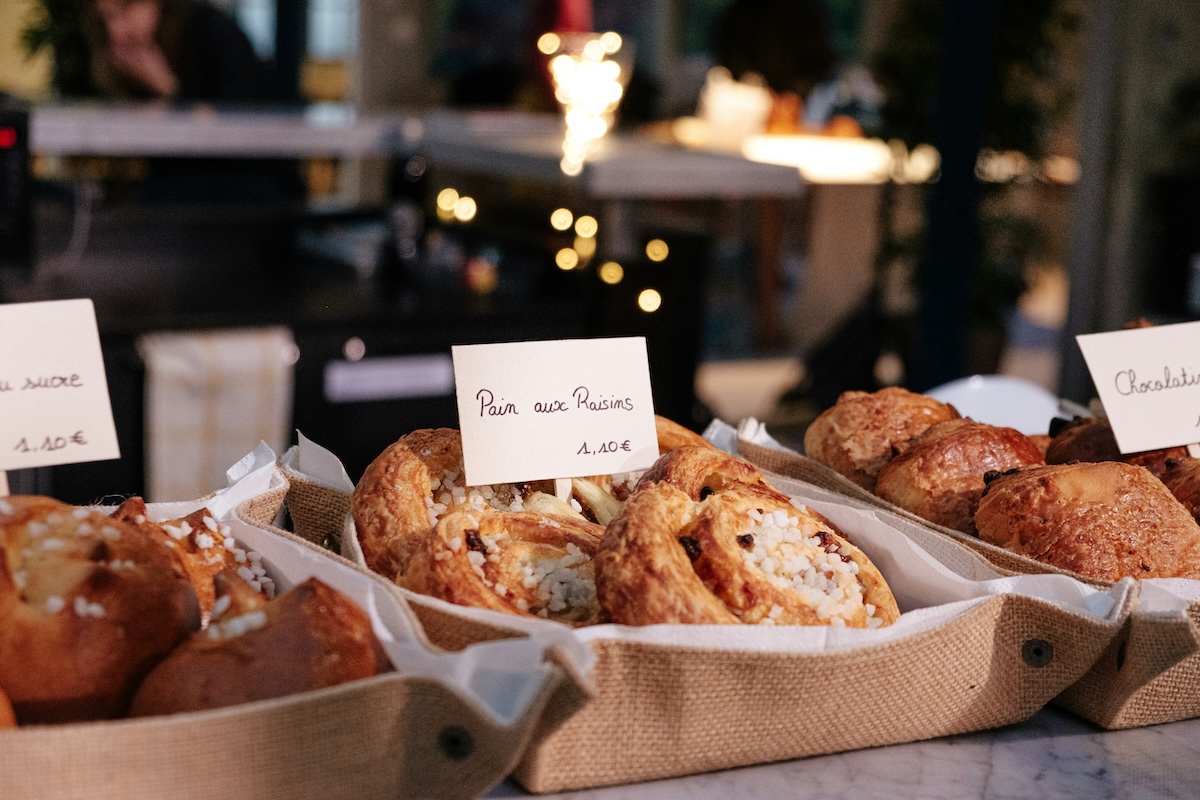
Other French breakfast items
French culture is increasingly embracing international customs, including the adoption of cereal for breakfast. While many still prefer sweet options, savory choices are less common, with bread remaining a staple. However, as lifestyles evolve, more French individuals are opting for on-the-go breakfasts, departing from traditional norms. In reality, breakfast often consists of just coffee with a quick bite, reflecting the priority of simply fueling the body in the morning.
Typical French breakfast in a French hotel
Traditionally, French hotels would offer a standard breakfast featuring coffee, freshly squeezed orange juice, and some form of tartine or brioche. However, many hotels have adapted to global preferences by introducing international breakfast menus. These often include buffet spreads with a variety of cheeses, cold cuts, eggs prepared in various styles, vegetables, yogurt, granola, cereals, and other popular breakfast foods.
Typical French breakfast in a French cafe

French cafés will usually offer a traditional French breakfast served on plates and in a cozy atmosphere. While their coffees may not be the finest, they excel in offering excellent juice and generally satisfactory pastries. Most cafés will offer a prix-fixe menu for a classic French breakfast of a hot drink, juice, and one viennoiserie or tartine. The baked goods are likely not made in-house, and will often come with individual jam jars from brands like Bonne Maman. But Some cafés go the extra mile, presenting freshly-made tartines and house-made jam, though this often results in a pricier version of what you’d find at a local bakery, albeit with the added convenience of seating. Breakfasting in cafés isn’t a common practice among the French, but they may pop into a bar for a quick coffee. (Many French people will choose to take their coffee standing at the bar instead of being seated at a café, as the coffee prices are cheaper if you take them standing.)
Facts about breakfast in France
The modest size of the French breakfast may also be attributed to its early consumption. While breakfast in other places might extend until 11 am or even later (as in Mexico), in France, it can start as early as 7 am, when the local bakeries open.
French cuisine is gradually incorporating international dishes into its breakfast menus, such as avocado toast, French toast, bagels, shakshuka, and other savory items. However, these are more likely to be found on brunch menus. Le brunch has grown in popularity in France over the course of recent years, expanding the definition of French breakfast food, and those looking for more of an American breakfast with scrambled eggs and French toast or pancakes should look out for restaurants that specifically offer a brunch option.
What the French drink for breakfast
For a typical breakfast, the French indulge in coffee or French hot chocolate, along with a glass of fruit juice, typically orange. (Freshly squeezed orange juice is so popular in France that most grocery stores have machines where you can have fresh juice squeezed in real time.) But habits evolve, and these days the “hot drink” option at many specialty French cafés has grown to include flat whites and matcha lattes. You won’t be able to find them everywhere, so if you don’t want a traditional espresso with your French breakfast, look out for places specifically designated as “coffee shops,” not cafés. In major cities like Paris, there now exists an abundance of third wave coffee shops where you can enjoy your single origin cortado, but these places often have limited (and expensive) food menus, so if that’s your cup of tea, you might want to stop at a bakery and grab a croissant first.
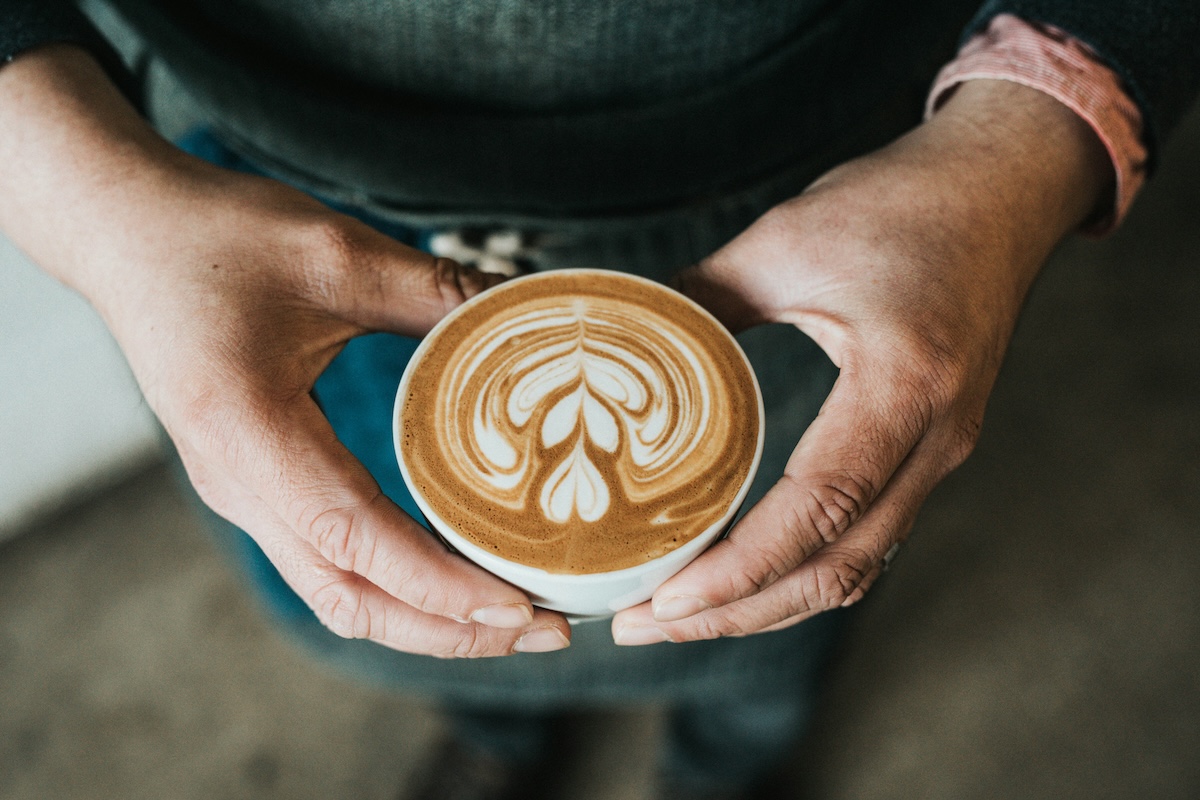
Foods the French do NOT eat for breakfast
French breakfasts typically steer clear of savory items like eggs, cheese, or meats. You’re not likely to find bacon, scrambled eggs, hash browns, or breakfast sandwiches on a French breakfast menu, as preferences lean towards simple fare that doesn’t require extensive preparation or stove use, with options often limited to spreading jam or warming up bread.
Iconic Breakfast Places in France
The typical French breakfast scene lies somewhere between the comfort of home and the bustling boulangerie. While some opt for breakfast at café, some of which operate around the clock, this isn’t as widespread. However, innovative cafés and all-day breakfast spots are becoming increasingly popular across France, attracting patrons who choose to both work and dine there. While many may dream of indulging in breakfast at iconic establishments like Café de Flore or Les Deux Magots, such outings are often reserved for special occasions rather than everyday routines. Instead, a visit to a local bakery is a more common practice for the average French individual. But if you’re visiting Paris, you may want to check out cult favorite breakfast spots like Holybelly, Mokonuts, and Restaurant Loulou.
Typical French Brunch Food Items
Brunch has evolved into an international phenomenon, with France adding its own unique flair to the concept. Picture omelettes and quiches alongside baguette sandwiches, avocado toasts, pain perdu (French toast), and bagels with salmon, in addition to more traditional French breakfast foods. This trend towards larger meals served later in the morning is gaining popularity across the country, and nods to France’s increasingly globalized culinary culture.
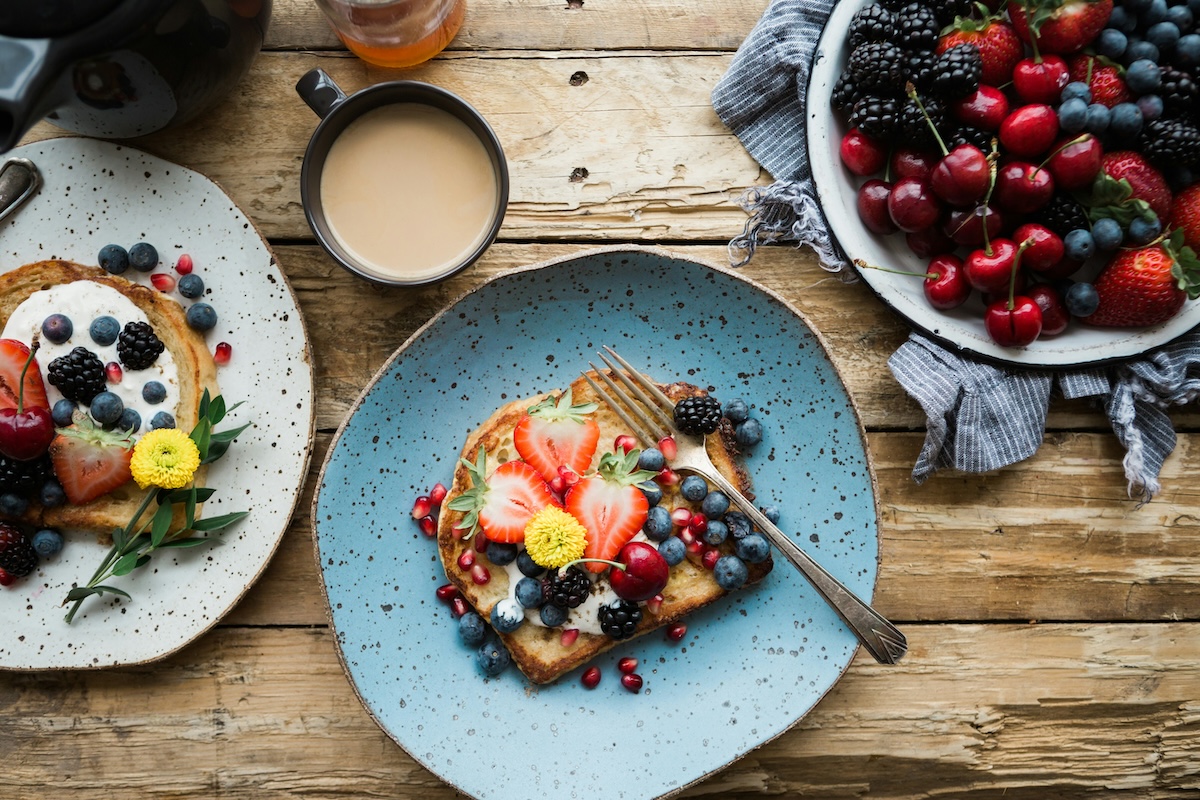
FAQ – French Breakfast
How do you say “breakfast menu” in French?
The French equivalent of “breakfast menu” is “menu du petit déjeuner.”
Do the French eat radishes for breakfast?
No. While radishes are not typically a common breakfast item in France, they are a popular snack food in France, often served with butter or salt. However, there is a popular type of radish in France called the “breakfast radish,” a rather misleading title for a wonderfully sweet and mild vegetable.
Are crêpes and galettes French breakfast foods?
No, crêpes and buckwheat crêpes (known as galettes), are not considered typical French breakfast foods. These are usually enjoyed for lunch, or as a sweet or savory snack, as they are complex dishes for breakfast. However, some people may choose to eat crêpes earlier in the day. Some types of crêpes, like crêpes Suzette, are even prepared exclusively as dessert items.
What is the main meal of the day in France?
In France, the main meal of the day is typically lunch, known as “le déjeuner.” Lunch is traditionally a leisurely affair and often consists of multiple courses. As with dinner, it can include a starter, main course, cheese course, and dessert. Lunch is considered by many French people to be the most important meal of the day, both culturally and socially, and is often enjoyed with family or friends. (Which makes sense, given the long lunch break that is traditional in France.) Dinner, known as le dîner, tends to be a light meal, and is usually served later in the evening, generally no earlier than 8 pm. To tide you over, there is usually a sweet afternoon snack, known as the goûter. Many people will also have light snacks during an apéro, or pre-dinner drinks. However, in recent years, dining habits in France have evolved, with more people opting for lighter lunches and dinners due to changing work schedules and lifestyles.

